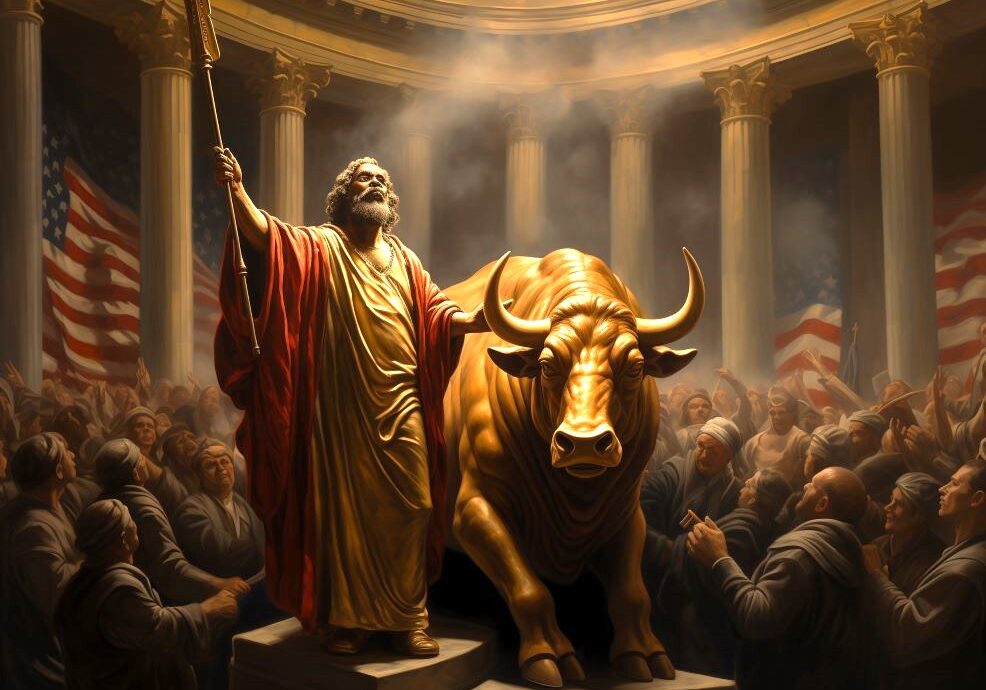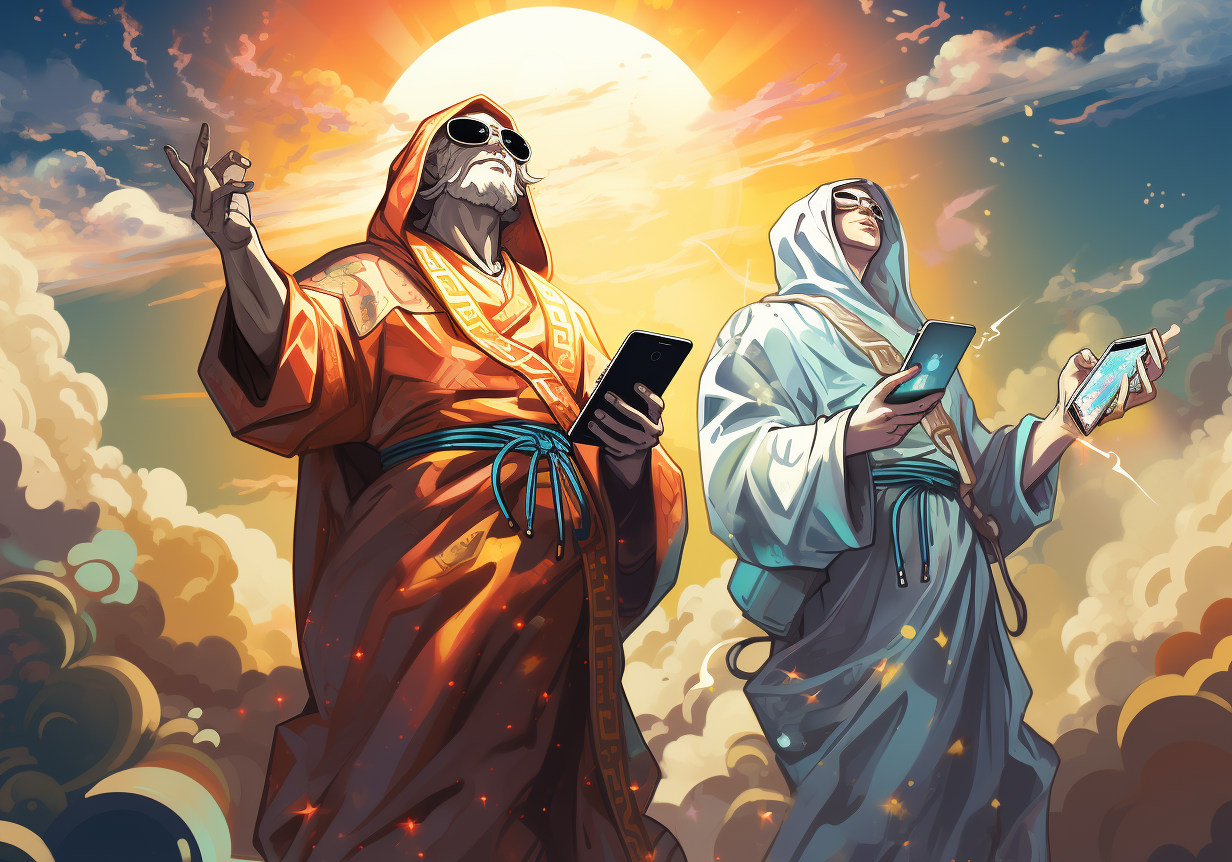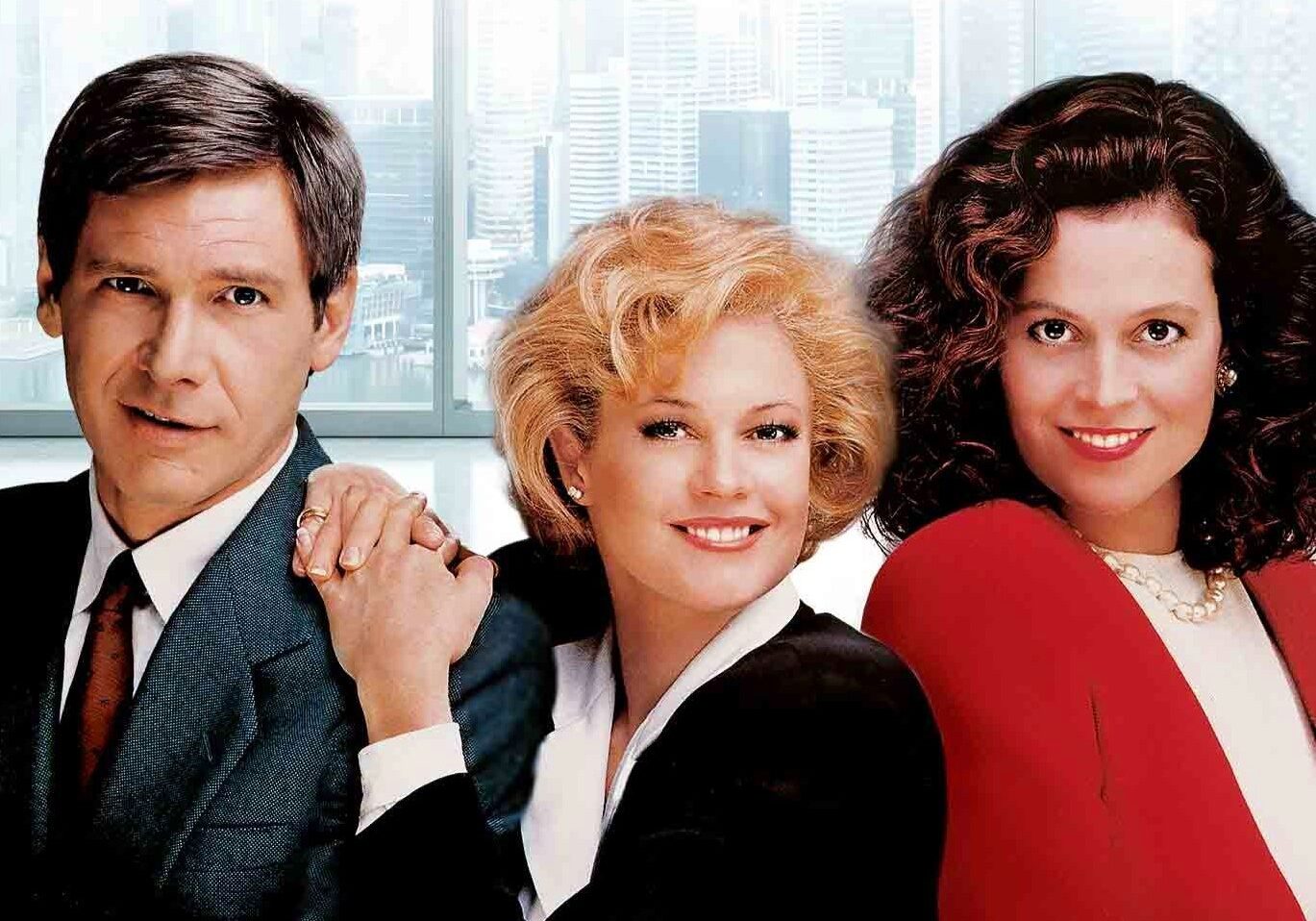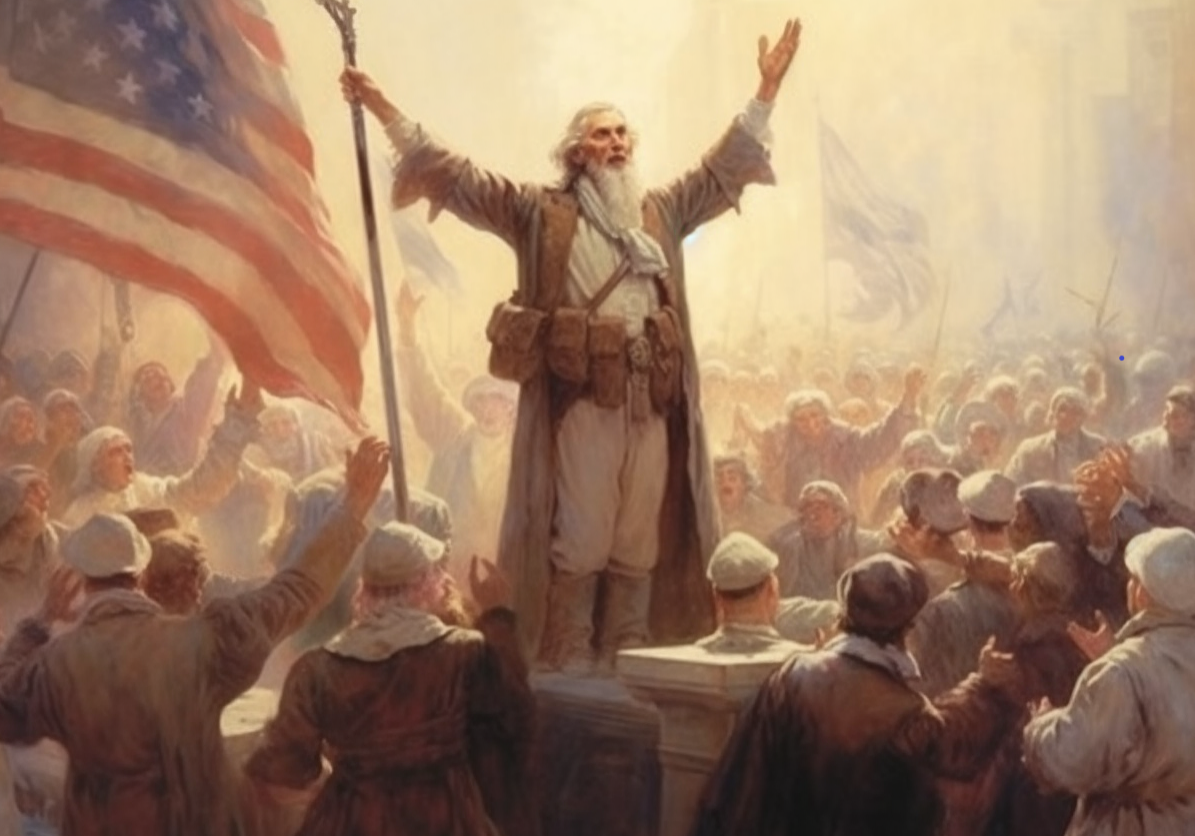Bear Stearns and the Narratives of Systemic Risk
To learn more about Epsilon Theory and be notified when we release new content sign up here. You’ll receive an email every week and your information will never be shared with anyone else.
Continue the discussion at the Epsilon Theory Forum
6 more replies
The Latest From Epsilon Theory
This commentary is being provided to you as general information only and should not be taken as investment advice. The opinions expressed in these materials represent the personal views of the author(s). It is not investment research or a research recommendation, as it does not constitute substantive research or analysis. Any action that you take as a result of information contained in this document is ultimately your responsibility. Epsilon Theory will not accept liability for any loss or damage, including without limitation to any loss of profit, which may arise directly or indirectly from use of or reliance on such information. Consult your investment advisor before making any investment decisions. It must be noted, that no one can accurately predict the future of the market with certainty or guarantee future investment performance. Past performance is not a guarantee of future results.
Statements in this communication are forward-looking statements. The forward-looking statements and other views expressed herein are as of the date of this publication. Actual future results or occurrences may differ significantly from those anticipated in any forward-looking statements, and there is no guarantee that any predictions will come to pass. The views expressed herein are subject to change at any time, due to numerous market and other factors. Epsilon Theory disclaims any obligation to update publicly or revise any forward-looking statements or views expressed herein. This information is neither an offer to sell nor a solicitation of any offer to buy any securities. This commentary has been prepared without regard to the individual financial circumstances and objectives of persons who receive it. Epsilon Theory recommends that investors independently evaluate particular investments and strategies, and encourages investors to seek the advice of a financial advisor. The appropriateness of a particular investment or strategy will depend on an investor’s individual circumstances and objectives.









Your description brings back the grooves and divots from that period. It felt nothing like a process then. Yet now it does as we are in the second 100-year event in twelve years. Thanks for taking the time to put things into context. “Yet today, with all the winning chips in our favor, capitalism appears to have morphed into a “technology,” like social media, that is designed to find the clearing price for our values and beliefs.” https://negativenetworkeffects.com/
Excellent note, as always.
“See, that’s the thing about narrative-world, both for markets and politics. People can get used to ANYTHING in narrative-world. As the COVID-19 narrative becomes that of a chronic and excusably lethal event for the United States, as opposed to an acute and unforgivably lethal event, we WILL get used to it.” … " And so even then, I expect the new clusters will be explained away, lost in the shuffle of 500 to 1,000 Americans dead from COVID-19. Every freakin’ day."
I’m immensely curious how the new ‘get used to’ interacts with the old ‘get used to’. The new ‘get used to’ in the way I’m defining it isn’t the eupepsia of the 500-1k deaths per day. That’s just a diluted version of the old ‘get used to’. And I agree it will be completely explained away.
The new ‘get used to’ is the juxtaposition of experience vs. expectation. The first casual dining sit-in meal. The first televised major sports event (with no fans). Major office building re-openings. And I think initially this will be met with a hopeful fascination, if not celebration - a new iteration of something that we all want back so desperately. But after 3, 6, or 8 weeks of adjustment, will this new ‘get used to’ clash with the hope that came from the old ‘get used to’? Particularly in the absence of a new CV-related mortality impulse. Will the “Necessary, Painful, and Very Temporary” that was coated to the first pill attach itself to the second? My guess is yes, for a while. And then no, as the juxtaposition of day-to-day expectations vs reality asserts itself.
I’m reserving the implications of post-re-opening lethal and severe events to a different category entirely. The lie will be given at some point.
I suppose I am making the hypothesis that something in narrative-world may shift (more positively, then negatively) before/independently (of) the big lie is given to complacency. That’s fair, and maybe too cute.
Admittedly I do not read the New York Times , however , the news I do consume seems to be trying to paint the opposite narrative.
According to Worldometer the number of deaths in the US yesterday was the lowest since March 31. After seeing that I jumped on My trusty CNBC app to see how the futures were responding—-the first story was about a spike in Singapore- yes Singapore , and it was followed by a story about the number of total worldwide cases going over 3 million. not active cases—-total cases.
AS I write this the same app has a picture of Jeffrey Gundlach discussing his plans to short the market. 8 mins ago the Dow was up 300 but oil was PLUNGING.
NJ Gov needs more Federal aid to avoid ARMAGEDDON scenario. These are the actual headlines on the CNBC app as I write this.
The last thing the media in America wants is a higher stock market and the economy moving forward in an election year where Donald Trump is running for re-election. At least that’s my reading.
I live in KY and not New York , I know exactly 2 people personally that have been diagnosed with Covid 19 , both have been released and are recovering - including my 85 year old uncle. I know or should say knew 2 people who were in recovery from addiction that have died in the past month from overdoses. I read this morning about cancer patients not being able to get treatments because the nation’s resources are focused exclusively on Covid 19. My point is only this - there is a human casualty count on both sides of the lockdown debate—-I don’t pretend to know what it is and none of us know the counter factual involved.
To paint this debate as people who care about lives on side and money on the other is a bit disingenuous.
Ben, first, thank you for teaching me about a process of thought. Show me the “how” and I’ll get myself to the “what.”
Where can I learn more about the narrative construction process? This question has probably been asked a million times before, so forgive me, but where can I find a list of the most important books and authors on this subject, presuming that I have the background to digest academic expository works? (Feel free to point me to works and authors that I will not understand. In my view, it is no use reading works that you can understand without a long struggle.)
I wanna short the whole goddamn system… how do I do that?
Buy physical Gold?
I am not knowledgable in the financial aspects of this post. But we can learn something from the medical side. George Giles on LRC today posts about Epidemiology. The important point is that the CDC reports the raw data from various causes of death per year. Giles reports that the latest data on the CDC are from 2017. These data can be used to create a cause of death histogram for any year which can then be normalized by the total number of deaths in the histogram for that year. Each year’s histogram will have a shape. Most likely, an unusual medical event like a pandemic or plague will have a substantial effect on the shape of the normalized histogram when compared to other years.
My assessment, as well as many of my colleagues, is that the normalized histogram of the causes of death for 2020 will show a spike associated with Covid19 as well as a significant decrease in several of the other lines. Unfortunately, we can’t know this now.
Intellectually it’s possible with a bit of re-reading to grasp the essence of all this—possible but not easy. A recent quote you cited: “Hope has two beautiful daughters; their names are Anger and Courage. Anger at the way things are, and Courage to see that they do not remain as they are. – St. Augustine” is a problem for the narrative for ME (It’s always about me!—to me) in that as I sit in Monterey CA, at almost 74, well travelled and friendly enough to have acquaintances–friends and family-- all over the globe and on every continent but Antarctica, I still have knowledge of exactly 1 person, indirectly, who has succumbed to CV19—(my daughter’s friends elderly and very sick father.) That’s as close as I can get to the ‘ultimate downside’ of CV19.
Anger and Courage…
Contrast that to 9/11 and/or the 2008/09 Crash. I knew 5 souls lost that day. My sister and husband in NYC knew so many victims of the WTC collapse they ended up drawing a chart to decide which funerals they could attend together-- or had to go separately. EVERYONE we knew was hit by the Financial Cancer that ate out a large chunk of the Nation’s internal organs a dozen years ago…BUT in 2020, from Monterey to Thailand to Lugano to Cork to Manchester to Beijing to Des Moines to Miami the direct known ‘fatality count’ is Zero…and indirect is a grand total of 1. I’ve asked every one of the folks in the aforementioned sites, and more, and the count remains.
Tough to create a meaningful narrative…at the same time, 100% of us have been affected (inconvenienced?) by C19 and/or the governmental response to same. Perhaps the ‘narrative’ will be an honest-to-God examination of when subsidiarity makes sense, or when it’s OK to actively oppose the wannabe dictators who think they have the authority to say it’s fine to go kayaking but not motor-boating—and DO NOT EVEN think about buying seeds for a garden!!
Anger and Courage…
Whose ‘science’ do I buy into? The science that creates models that turn out to be off by a factor of @ 35:1 or the ‘new science’ with hard data that finally give us BOTH a numerator and denominator we should have had confidence in before we shut down the world…??
Anger and Courage…
As it stands now I do not see, hear or sense a ‘pack’…none. Not here on the Central Coast of CA…I do sense a growing disgust with and an increasing loss of respect for every layer of government and while my Libertarian fraction applauds that, my traditional conservative urges react with more than a little alarm. Is that a pack?
Anger and Courage…
The thumbs up button doesn’t work under the ‘read more’ mode, so thumbs up!
Meanwhile, our practice had a meeting yesterday to prepare for opening here (in Georgia). The manager asked if anyone had any medical events in their family or friends from cv19. One person out of more than 60 people present had an elderly uncle die. That’s it. Maybe mitigation worked. Maybe people didn’t want to admit to being a witch or a communist.
But more and more, I am worried that those repo gyrations are not coincidental. Shoot me now, preferably with a young sweetgum seed.
It’s still too early to expect a lot of victims in your direct line of sight. Talk to emergency room personnel across the world to get a reality check.
I do personally know two victims (both male 37 and 51 years old). Neither died, but both seriously sick (weeks on a ventilator) with months of expected rehab time ahead.
The narrative described here is the one in the Financial Markets where the S&P 500 is still at Summer 2019 levels.